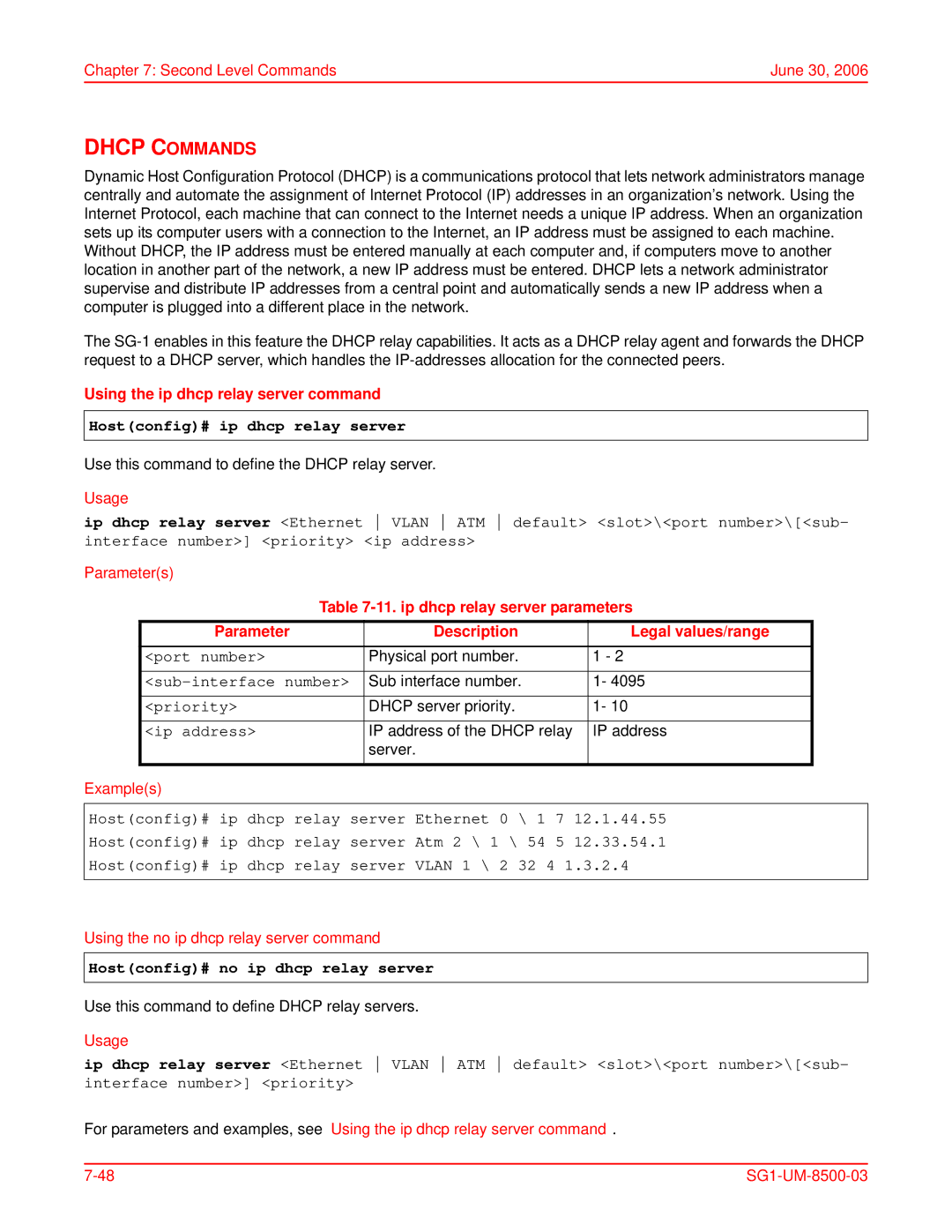
Chapter 7: Second Level Commands | June 30, 2006 |
DHCP COMMANDS
Dynamic Host Configuration Protocol (DHCP) is a communications protocol that lets network administrators manage centrally and automate the assignment of Internet Protocol (IP) addresses in an organization's network. Using the Internet Protocol, each machine that can connect to the Internet needs a unique IP address. When an organization sets up its computer users with a connection to the Internet, an IP address must be assigned to each machine. Without DHCP, the IP address must be entered manually at each computer and, if computers move to another location in another part of the network, a new IP address must be entered. DHCP lets a network administrator supervise and distribute IP addresses from a central point and automatically sends a new IP address when a computer is plugged into a different place in the network.
The
Using the ip dhcp relay server command
Host(config)# ip dhcp relay server
Use this command to define the DHCP relay server.
Usage
ip dhcp relay server <Ethernet VLAN ATM default> <slot>\<port number>\[<sub- interface number>] <priority> <ip address>
Parameter(s)
Table
Parameter | Description | Legal values/range |
<port number> | Physical port number. | 1 - 2 |
Sub interface number. | 1- 4095 | |
<priority> | DHCP server priority. | 1- 10 |
<ip address> | IP address of the DHCP relay | IP address |
| server. |
|
Example(s)
Host(config)# ip dhcp relay server Ethernet 0 \ 1 7 12.1.44.55
Host(config)# ip dhcp relay server Atm 2 \ 1 \ 54 5 12.33.54.1
Host(config)# ip dhcp relay server VLAN 1 \ 2 32 4 1.3.2.4
Using the no ip dhcp relay server command
Host(config)# no ip dhcp relay server
Use this command to define DHCP relay servers.
Usage
ip dhcp relay server <Ethernet VLAN ATM default> <slot>\<port number>\[<sub- interface number>] <priority>
For parameters and examples, see “Using the ip dhcp relay server command”.
|
